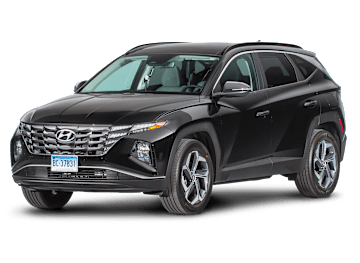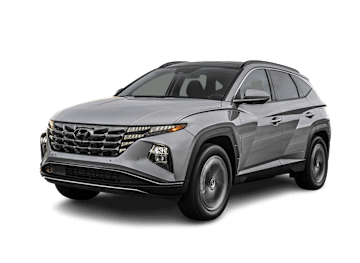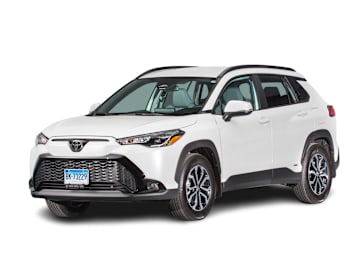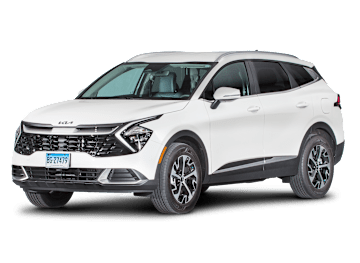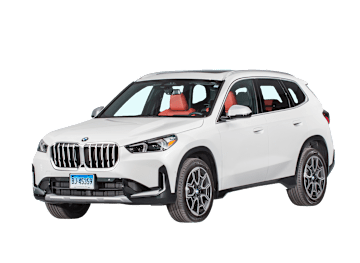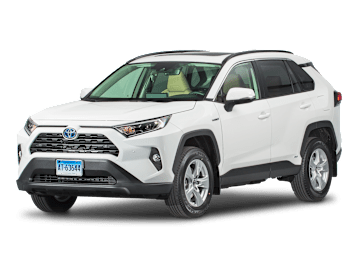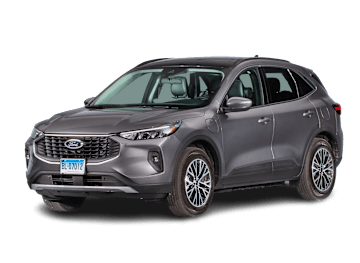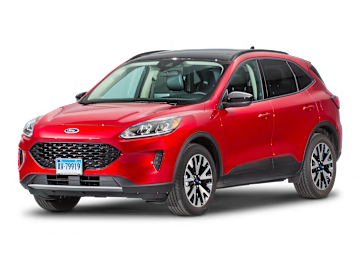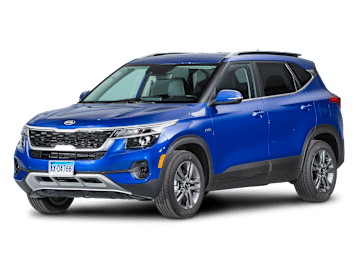Los SUV compactos más confiables y de bajo consumo de combustible

Estos modelos que te recomendamos combinan la utilidad de un SUV y lo práctico de un auto pequeño con gran ahorro de combustible.
By Jon Linkov
Los SUV compactos son los modelos más populares del mercado, gracias a su atractiva combinación de la eficiencia de un auto pequeño y la utilidad de una camioneta familiar. Según Kelley Blue Book, en 2023 el Toyota RAV4 fue el vehículo más vendido de los que no eran camionetas, ocupando al mismo tiempo el cuarto lugar en la clasificación general, seguido de cerca por el Honda CR-V como el sexto vehículo más vendido. Además, los SUV compactos representan siete de los 10 autos más populares en ConsumerReports.org.
En cualquier vehículo, la fiabilidad y el ahorro de combustible son siempre las principales cuestiones a tener en cuenta. La lista a continuación incluye SUV compactos híbridos y convencionales que obtuvieron buenas calificaciones en las pruebas de carretera de Consumer Reports, además tienen calificaciones de confiabilidad pronosticadas promedio o mejores y consumen 28 mpg (millas por galón) en general o mejor.
Todos son modelos recomendados, lo que significa que no encontrarás ninguno con poca fiabilidad, baja satisfacción de sus propietarios, o que carezca de características de seguridad. Los hemos enumerado en orden de puntuación general. Todos vienen de serie equipados con frenado automático de emergencia (AEB, por sus siglas en inglés) con detección de peatones, AEB que funciona a velocidades de autopista, advertencia de punto ciego (BSW, por sus siglas en inglés) y advertencia de tráfico cruzado trasero (RCTW, por sus siglas en inglés), a menos que se indique lo contrario.
Muchos de estos modelos cuentan con nuestra designación Green Choice, que destaca los vehículos con las emisiones más limpias. Si bien probamos las versiones con tracción en las cuatro ruedas de estos modelos, nuestra recomendación se extiende a las versiones menos costosas con tracción en las dos ruedas (si es que se ofrecen).
Algunos modelos populares no están incluidos, como el CR-V, que consumió solamente 26 mpg en general en nuestras pruebas. Otros, como el Subaru Forester, están siendo rediseñados y aún no los hemos probado.
The Prime plug-in hybrid transforms the RAV4 into a quick, quiet, comfortable-riding, and more upscale SUV. It bridges the gap between a hybrid and a pure EV. With its electric drive and a 2.5-liter four-cylinder engine combining to produce 302 hp, the SUV feels very quick. The Prime can cover about 40 miles on electric power alone. After that, it transitions to hybrid mode, where it got 34 mpg. In most situations, the added electric power keeps the gas engine from having to rev high, where it can become noisy. It takes almost 5 hours to charge the battery on a 240-volt outlet.
The Crosstrek got an evolutionary redesign for 2024. It’s still essentially a raised Impreza hatchback with a very comfortable ride and standard all-wheel drive. Acceleration from the standard 2.0-liter engine is leisurely, and we got 29 mpg overall in our tests. Engine noise is pronounced when full power is needed, but the sound isn’t a deal breaker. Responsive handling, user-friendly controls, and a practical interior round out the package. The newly optional power driver’s seat with adjustable lumbar support is a major upgrade. BSW and RCTW aren’t available on the base trim, but they’re optional on the Premium and Sport and standard on the rest of the line.
The Sportage plug-in hybrid uses a 1.6-liter turbo engine and electric drive, along with a larger battery than the regular Sportage hybrid. It’s EPA-rated at 34 miles of electric propulsion before transitioning to regular hybrid operation, where it got 31 mpg in our tests. It’s quite easy to remain in electric power during urban and suburban drives. For high-power demands, the gas engine kicks in. It takes about 2.5 hours to charge the battery on 240-volt, and can also be done on regular 120-volt overnight. Other aspects mirror the Sportage line with a firm, steady, and comfortable ride, responsive and secure handling, and a relatively quiet cabin. The rear seat is roomy, and the cargo area is generous for the class. Controls are mostly easy to use.
The Tucson hybrid is the best version of Hyundai’s compact SUV. The pairing of a 1.6-liter turbo engine and electric assist puts out a combined 226 hp and returned 35 mpg overall in our tests. This combo also makes it significantly quicker and quieter than the regular Tucson. It has responsive handling, and the ride is firm yet steady. We found that the nicely trimmed cabin is relatively quiet. The back seat is roomy, and the cargo area is generous for the class. Though most controls are easy to use, higher trims replace physical volume and temperature knobs with touch-sensitive controls and a push-button gear selector.
The fuel-efficient CR-V Hybrid combines a 2.0-liter 4-cylinder engine with electric drive. It delivers ample oomph, and we appreciate the way Honda’s hybrid system delivers simulated upshifts, mimicking a traditional automatic. It managed 35 mpg overall in our testing, which is competitive with other compact hybrid SUVs. The ride is firm but absorbent, and the CR-V’s handling is responsive and secure. The rear seat is generously sized and easy to get into and out of. A relatively simple and boxy shape gives the CR-V good outward visibility and ample cargo room. The controls and infotainment system are easy to use.
We think the NX 350h hybrid is the best version of the NX line. It not only delivers an excellent 38 mpg overall but also feels more refined than the gas-only NX. The cabin has a larger infotainment touchscreen that replaced the fussy touchpad, but for some reason, Lexus added rather frivolous electronic door latches. Handling is responsive but not sporty, the ride is firm yet absorbent, and the snazzy cabin is impeccable. But the interior is still narrow, and outward visibility is hampered. The shifter is a bit tricky to use, and the center dash vents are too low, blowing cold air on the driver’s elbows.
The Tucson PHEV uses a turbo four-cylinder with a more robust electric drive than the Tucson Hybrid. Its larger battery enables the SUV to drive an EPA-rated 33 miles on electric power. Once the battery is depleted and it transitions to hybrid operation, it gets 31 mpg. It takes just under 11 hours to recharge the battery on a 120-volt household outlet or about 2.5 hours on a 240-volt EV charger. It’s fairly easy to remain in electric power around town with a charged battery, but the gas engine kicks on during harder acceleration. Other aspects mirror the Tucson line with a steady and comfortable ride, responsive handling, and a relatively quiet cabin. The rear seat is roomy, and the cargo area is generous for the class. Controls are easy to use, but the push-button gear selector takes familiarity.
The Corolla Cross Hybrid is smaller than the RAV4, comes standard with all-wheel drive, and uses a 196-hp, 2.0-liter four-cylinder hybrid powertrain. In our tests, it returned an impressive 41 mpg and is much more enjoyable to drive and live with than the regular Corolla Cross. The SUV suffers from excessive engine noise during even moderate acceleration. Ride and handling are competent but unremarkable. The simple interior feels a bit stripped-down, but the controls are easy to use and the rear seat is fairly roomy.
The Sportage is one of the roomiest compact SUVs, and the hybrid version is the pick of the line. It’s quicker and quieter than the gas-only Sportage, transforming the driving experience thanks to its electric drive and turbo four-cylinder, which together yield 227 hp. We measured an impressive 36 mpg overall. The Sportage has responsive handling and a firm yet absorbent ride. Most controls are easy to use, although having to toggle back and forth between the dual-use touch controls for climate and media systems is annoying. The front seats are comfortable, and the rear seat offers generous headroom and legroom. BSW and RCTW aren’t available on the base LX.
The X1 is powered by a responsive turbo four-cylinder engine and the seven-speed dual-clutch automatic shifts smoothly, but the initial takeoff is abrupt. We got 28 mpg overall in our tests. The ride is stiff but handling is agile and secure. The new control layout forgoes BMW’s ubiquitous iDrive controller knob and relies on the touchscreen alone. Most climate adjustments are now done through the screen, which is distracting while driving. The seats are very comfortable, the cabin has stylish details, and the floating center console frees up space for the driver’s right knee. Highway speed AEB is optional.
In our tests of the hybrid version of the RAV4, we found that it felt energetic, with the electric drive producing immediate and quiet motivation from a standstill. A bonus is that it delivers an impressive 37 mpg overall. The RAV4 is responsive in corners, and it remains under control even when pushed. The ride, however, is rather stiff, and the noisy engine hurts the driving experience. Plus, the rugged styling compromises interior space. Both BSW and RCTW are optional.
If top mileage in a small package is your key desire, look no further than the UX 250h Hybrid, the smallest Lexus model. In our tests, the all-wheel-drive 250h returned an excellent 37 mpg overall. The UX has a comfortable ride, but it’s more on the firm side than other Lexus SUVs. Handling is responsive, and the compact size makes the UX very maneuverable, but it isn’t sporty to drive. Visibility is limited all-around, and the interior is tight, particularly the rear seat. The UX also has many of the brand’s fussy controls.
The Escape plug-in hybrid is efficient and pleasant to drive, aided by its EPA-estimated 37 miles of electric range before it transitions to regular hybrid operation. It achieved a commendable 37 mpg overall while running as a hybrid in our tests. But it’s only available with front-wheel drive. It takes about 5 hours to recharge the battery on a 240-volt connection or about 10 hours on 120 volts. The ride is steady and composed, and handling is agile, although you do feel the extra weight from the PHEV hardware. The Escape features an infotainment screen with unintuitive touch-based climate controls. The firm front seats are flat and don’t provide much support, and a limited range of adjustments compromises the driving position.
The hybrid version of the Ford Escape gets an impressive 34 mpg overall in our tests and doesn’t suffer from the persistent—and annoying—engine vibration that we experienced in the regular Escape with the 1.5-liter three-cylinder. As with the regular Escape, the hybrid version’s ride has an underlying firmness, but it’s steady and composed. Handling is nimble and secure, but the brake pedal is oversensitive. Controls, including the rotary gear selector, are easy to use. The firm front seats are flat and don’t provide much support, but the rear seat is quite roomy.
The non-hybrid Corolla Cross can be had with either front- or all-wheel drive and uses a 169-hp, 2.0-liter four-cylinder engine matched to a continuously variable transmission. It feels slow but we managed to get a decent 28 mpg overall in our tests. Like the hybrid, the regular version suffers from excessive engine noise during even moderate acceleration. Ride and handling are competent but unremarkable. The simple interior feels a bit stripped-down, but the controls are easy to use and the rear seat is fairly roomy. BSW and RCTW are unavailable on the base trim but standard on the higher trims.
The Seltos offers versatility at an attractive price. It has a roomy interior for its small footprint, it’s easy to get into and out of, and it has clear outward visibility and good fuel economy. The standard 2.0-liter four-cylinder engine, paired with a continuously variable transmission, provides unobtrusive acceleration and returned 28 mpg overall in our tests. The uplevel 1.6-liter turbocharged four-cylinder has more peak power but feels lethargic at lower engine speeds. The stiff ride and loud cabin are two significant drawbacks. Handling is responsive and secure. Controls are easy to use, and the rear seat is roomy for the class. BSW and RCTW come standard on all but the lower trims.
Si estás buscando comprar un auto usado, puedes hacer clic en las páginas de modelos para obtener información sobre vehículos de años anteriores. Los miembros de CR también pueden buscar en nuestro Used Car Marketplace (Mercado de autos usados) en su área, clasificándolos por los factores que más les interesen. Los listados contienen calificaciones de confiabilidad y satisfacción del propietario de CR, y la mayoría de los vehículos incluyen un informe gratuito de Carfax.
Consumer Reports is an independent, nonprofit organization that works side by side with consumers to create a fairer, safer, and healthier world. CR does not endorse products or services, and does not accept advertising. Copyright © 2024, Consumer Reports, Inc.




